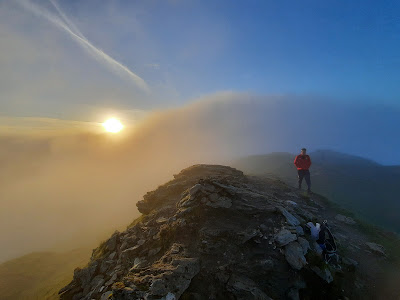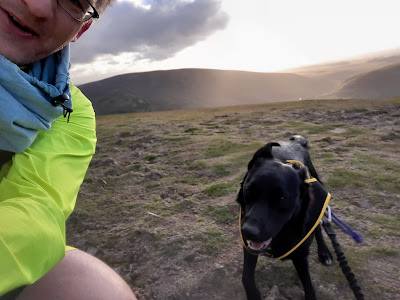I never thought I would be using a headtorch on a hill on midsummer's day!
But that's what happens when you climb that hill for sunset.
Ben Lomond from Beinn Chabhair:

The walk started with an early finish from work. Lorry and tractor filled roads brought me to Inverarnan, and a rendezvous with the friends who had organised this. At 17:30 in the evening the heat and humidity were remarkable for Scotland, and we made a slow start.
The summit remained in cloud, and I took the shot below, thinking it would be the last we would see of any view!
That assumption seemed right when we got to the top. The mist wasn't thick, but views were obscured. Still, it had been nice enough - it would be a very different evening in the rain.
Then something magical happened as we waited...
Ben Vorlich and Stuc a'Chroin appeared, climbed last solstice. Ben Lomond reappeared.
It was the first brocken spectre for one of our group:
And the second Munro (of hopefully many) for this one:
Before we knew it it was 21:30, and time to head down - it would be sunset around 22:10! We were slow descending, torches out at 23:30, finally down for half past midnight. The day held a sting in its tail - Bein Glas farm had locked its gate! It's a big no entry affair over a deep river. There was another bridge a mile to the north, with a mile of unpleasant road walking back with a black dog. Being locked in works if you have a small family and were worried about them wandering off. But I like to climb hills both late and early, so staying somewhere like Bein Glas farm wouldn't work in summer if I planned some hills!






























